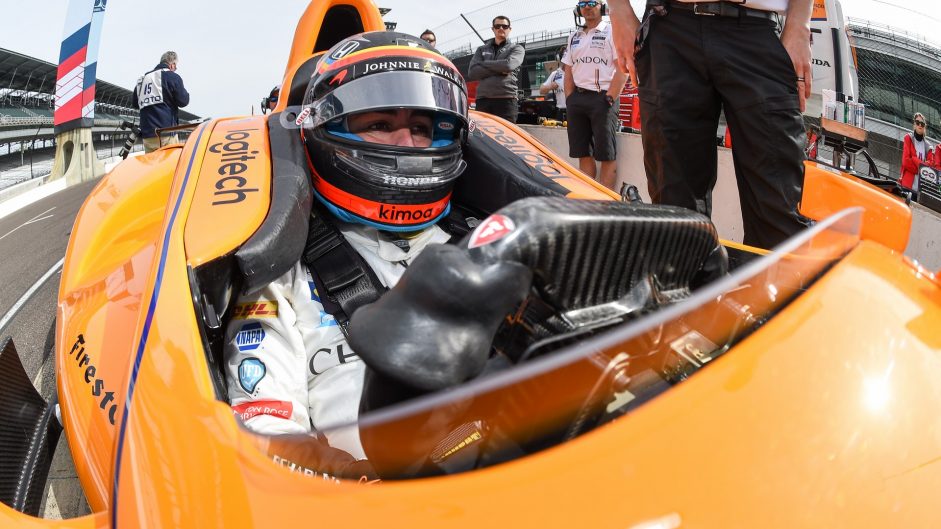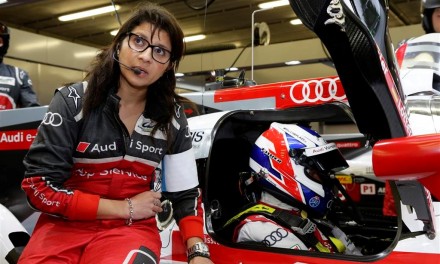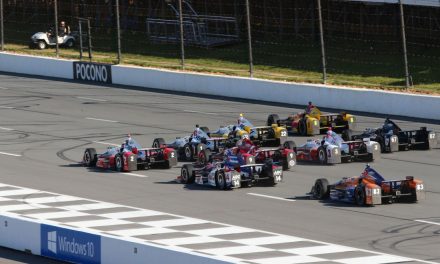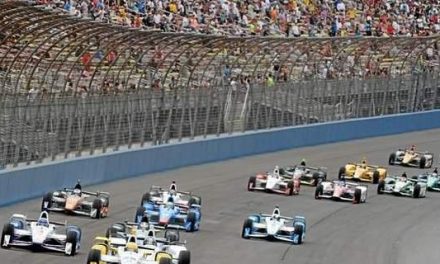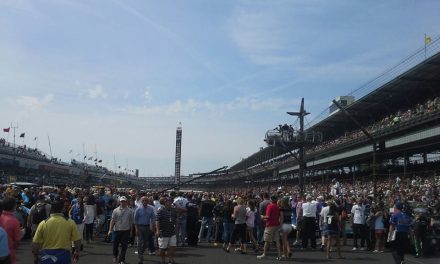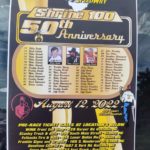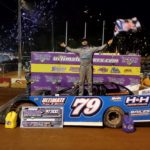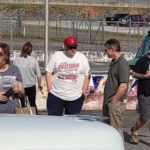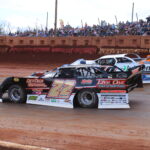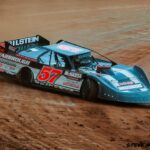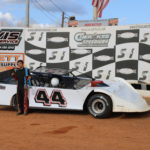Story by Paul Blaufuss. Photo courtesy f1fanatic.co.uk
Well here comes another month of May, and as usual there is no shortage of gripe-worthy issues:
- What to make of Fernando Alonso leaving his seat at McLaren to drive in the Indy 500? On one hand, my initial reaction was that it’s great! It is wonderful when drivers cross pollinate among all series. It makes racing more interesting all around. It takes me back to the old days when Indy drivers would more regularly drive F1, and vice versa. And the only racing where that happens with any regularity any longer is Daytona, Sebring and LeMans. The current state of racing, what with schedules, demands, contracts and financial interests, has all but eliminated series blending otherwise.
- Then I thought about it a little more, and I became less enthusiastic:
First, for Formula 1: Is Alonso so disheartened, and team McLaren, one of the mightiest, wealthiest, most successful organizations in the history of racing, currently so uncompetitive, that Fernando would give up his seat…. at Monaco ?! I have a hard time finding the words. What does this say about McLaren? And what does it say about the competitive state and stature of F1?
And secondly for Indy: What do they really hope to achieve? Last year’s 100th Anniversary race was a great spectacle. I am sure pressure exists to meet that bar this year. But is this the way to do it? What is the long term benefit? Will Indy fans connect with Alonso? He is no longer in the prime of his career. Will he attract younger fans? Will anyone really care who he is or where he is from? There will be some initial buzz, for sure. However there will be no long term relationship with Indy, as long as F1 and Indy race on the same day. After the experiment is over, Fernando will return to F1. Any short term benefit will have no long term effect, much as with Kurt Busch. Has Indy become just a bucket item for experienced drivers to check off their lists before they retire? If so, that is sad. And I get a whiff of a publicity sideshow stunt. But the folks at 16th and Georgetown would never stoop to that sort of thing, would they?
And most of all, I am most concerned for safety. Indy is not where one’s first oval experience should take place. Alonso has accomplished rookie orientation, as ‘exhaustive’ as that may be. Now what about true practice time? Factor in the always iffy Midwest weather, and the window will be even smaller. I have been unceasingly vocal for years in my criticism of Indy car’s attitude and record concerning safety. I hope and I pray this month does not become another instance proving me correct.
- Did anyone watch the Phoenix Indy car race? Didn’t think so. Did you see any shots of the Phoenix grandstands on Sportscenter? When any racing series does not place a warm body in the entire front stretch grandstands, it should not be cause for concern, but alarm and panic. Just when I think the current situation regarding racing attendance in all series cannot sink any lower, the Phoenix race happened. Seriously, there could not have been 5,000 people in attendance. I have been to better attended ‘A’ baseball games in the Sallie League. Tim Tebow with the Columbia Fireflies is outperforming Indycar attendance. And before you say “it is the desert and it was hot and everyone sat in the shade in turn one…” First (a) it was a night race. And (b) watch some of the race video…. there was no one in the shaded turn one seats either. It was certainly no way to build enthusiasm for the month of May.
- The first lap, second corner wreck that took out nearly half the field continues to cause me concern for the current crop of Indy pilots’ oval track skills.
- But at least the variety of Indy car designs, chassis and engine combinations keeps things diverse and interesting from an engineering standpoint…. Oh yeah, never mind.
- And the current generation Indycar sure looks cool, doesn’t it? I am sure Detroit is trying to integrate the svelte lines of those suitcases behind the rear wheels on the next generation Corvette as we speak.
- I said I was going to be more upbeat and supportive this year, but when I see the product being placed on the track I cannot help falling back to my cranky curmudgeonly ways. What does this mean going ion to the month of May? Indy will have a hard time living up to the 100th Anniversary last year. It was a great event and the Brickyard will have a hard time matching that Spectacle this year. The 500 will always be fine. Enough sponsors will sign up. Enough teams will fill the field. And enough fans will be there to celebrate the Memorial Day Tradition.
- I think the more important question is the health and long term viability of the Indy series. Some tracks do better than others. Phoenix has great weather and enthusiastic race fans. That race should have packed people in. It did not.
- The issues have been brewing for decades. The Indy series has been compass-less since they broke with their short track racing heritage in the 60’s. While I admire the diversity of tracks and styles of racing, Indy seems a ship lost at sea, endlessly unable to find their direction, who and what they want to be. Formula cars? Oval? Road? Superspeedway? City streets? The series has melded into a boring spec style car driven by largely milquetoast foreign drivers of varying levels of ability. The attendance in Phoenix mirrors the on track product. If any person, group, product or company does not have a clear vision of whom they are and the direction they are headed, how can they possibly focus on being the best they can be? The answer is they can’t, and in turn they become mediocre. And live at 16th and Georgetown.
- My dad always used to yell at me if I complained without presenting a solution. So I am prepared to walk the walk offer my own modest proposal to improve Indy racing. Here ya go:
Bring back the roadster. No. I’m serious. Take your time. I’ll continue when you are done laughing. Can I continue now? Ok good.
I believe that Indy racing had the perfect opportunity to fundamentally transform itself in 1996 when Tony George formed the IRL. I have always believed his heart was in the right place, but the timing and execution of the plan was all wrong and did not extend far enough.
The time has come to move American Open Wheel away from a spec- formula-wanna-be-sorta series. The sport was built on the short ovals on the mid- west. The time has come to re-center the sport on its heritage axis and rebuild its grandeur. The time has come to reconnect with the short track based warriors that are the source Indy racing DNA. The time has come for a simpler, safer, less expensive, cooler looking, steel construction, front engine, open wheel Indy car. A car that does not need to be ordered from a carbon fiber laboratory in Milano, but rather a car built in a racing shop in Indy or Charlotte by American Craftsmen. The time has come to simplify the rules and specifications. The cars could be built to run on dirt and asphalt. The series should be primarily oval based, but road courses could be mixed in for flavor.
And ponder this: how great would it be to attend an Indy car and Outlaw show at Williams Grove? Or maybe an Indy car / Modified double header at Thompson? Supermods and Indy at Oswego? How about the Indy cars taking part in the Dirt Finals at Charlotte? Indy at Eldora? Tell me these events would not generate serious enthusiasm for the series; provide financial support for the short tracks, and reconnect with up and coming open wheel drivers? Maybe we would see future Ryan Newmans, Kasey Kahnes, Jeff Gordons, and Ryan Blaneys stick closer to open wheel cars, where they belonged right along.
Take a look at the state of the series. Take a look at the cars. And take a look at the Phoenix attendance. Tell me what there is left to lose?
And as John Lennon said, you might say I’m a dreamer, but I ‘m not the only one.

